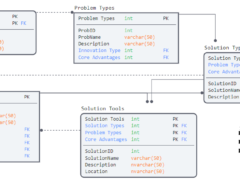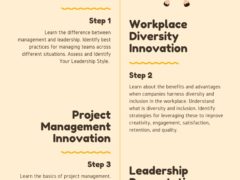The demands on the Pharmaceutical & Healthcare Industries to support innovation are at its peak. Healthcare legislation is being actively challenged and profit margins (and operating revenue) for the pharmaceutical industry, healthcare providers, and insurers continues to face increasing constraints. Low value specialty items are increasing market share while high value growth items are facing tighter profit margins. Data Analytics has developed a technology based platform that collects updates about policy and legislative changes effecting the pharmaceutical industry and provides this data to executives and strategists in real-time.
Analytics collects healthcare policy information from south of the border while achieving operations and cost efficiencies as a result of the differential currency values between the founding corporate office and the large corporate customers located in the United States.

The product and service offering list rivals that of the identified competitor with the company’s product/ service positioning innovation hinging on its real-time technology that keeps the business pharmaceutical executive, strategist, and investor informed.
In contrast to overlapping business models investigated in the industry, Data Analytics emphasizes providing just the right data, at the right time, and within the right analytical framework to support nimble decision-making. Competitive overlapping models lack the real-time emphasis and often give information in forms that still need filtering and digestion. This greatly simplifies the pharmaceutical executives task of taking the data provided and evaluating it through the company’s unique product/ service positioning and business priorities.
There are only a few known competitors to the Data Analytics model but it seems the opportunity for innovation and growth is practically unlimited. But so are the risks.
The pharmaceutical industries need for the technology developed by Data Analytics changes as quickly as the policy and legislative landscape. The technology’s positioning can be adeptly applied for forecasts of profit shortfalls and profit gains. This is because of the versatility of the data captured by the company’s patented technology which provides data in real time and without bias.
The customer on boarding process begins with the initial discussion which seeks to clarify the customer/ company’s requirements. The second step includes a PDCA model where subsequent layers of the individualized technology are developed in iterative sprints. The implementation of the technology post development includes team consultation, training, and coaching to ensure the technology is working as intended and the customer is able to identify the insights the data provides.
The differentiation between Data Analytics and overlapping business models is depicted by the displayed graph. Core product/ service offerings are supported by core competencies.
The graph displays 18-product / service offerings across seventeen companies compared. The first five product/ service offerings are key competencies supported through Data Analytics technology where the remaining thirteen are more common place, are often available for free, and are often provided through mediums that are less easily leveraged.
The challenge is that these overlapping models are incomplete, information is often outdated or much delayed, the content is hard to analyze and apply, bias is implicit in the elongated narrative style, and the customer is forced to filter through tons of information to find something relevant (and even then, the customer’s question may not be answered). Real time, data driven, and concise becomes a significant competitive advantage.
The next chart provides a comparison of companies and the number of product service offerings offered from the previous list. Because not all competencies are equal lets focus on the unique competencies listed on the left hand side of the previous chart. Data Analytics not only has those competitive competencies but also includes more from the larger list when compared to the other companies in this study.
previous list. Because not all competencies are equal lets focus on the unique competencies listed on the left hand side of the previous chart. Data Analytics not only has those competitive competencies but also includes more from the larger list when compared to the other companies in this study.
The number of product/ service offerings also speaks to the complexity of the corporate competencies needed to support them. Data Analytics more closely represents a one-stop-shop than all other companies in this study, followed by its nearest competitors that also focuses on data compilation, analysis, and consulting.
The companies in this study were also evaluated for pharmaceutical industry and policy analysis relevant positioning, language precision, and the use of a data driven approach. From a business model perspective (which we’ll go into in more detail in a later section)
product/ service positioning is crucial to gain awareness, engagement, and market share. Without effective positioning the product/ service mix will be considered unrelated to the problems the industry faces and adoption will be correspondingly low.
Positioning language is also important is vague, obscure, and conflicting language can interfere with customers identifying the company’s product /service positioning; and thus the relevance of the company’s solution. Company’s that pursue unrelated offerings have particular challenges in providing a clear positioning language thru which their expertise, relevance, and value can be recognized by potential customers.
The chart ranks each of the three factors according to their quality: +1 meaning aligned; 0 meaning mixed or ambiguous; and -1 meaning ranks poorly in this area.
The pharmaceutical industry 2017-18 faces many changes, challenges, and opportunities. This next chart provides examples of macro and micro changes anticipated for the next fiscal cycle. Some of these represent challenges where others represent opportunities.
How pharmaceutical executives respond to these changes will decide how (and how much) their companies are effected. Having the right data in real-time will make a big difference, determining those companies that have the opportunity to respond proactively and those that do not.
How will your company respond to these pressures? Having the right data at the right time can help pharmaceutical executives to identify when and where to invest R&D, develop new product offerings, expand or build into new product channels, or redistribute resources and focus.
The next chart depicts opportunities that are anticipated during the 2017-18 fiscal cycle. If you look closely you will notice one item mentioned in this chart (opportunities) that is also mentioned in the previous chart (pressures), lending further emphasis to the importance of data and responding proactively to system changes.
The Obama and Trump eras are leading in different directions when it comes to regulations, FDA approval frameworks, healthcare programming, and funding. This will influence insurance policies and coverage models in the private sector, as well as access, availability, and costs.
When an ethical framework for collaboration is available to support problem solving between the federal/public and private sectors the opportunities for healthcare innovation and access increases. Data becomes the great equalizer.
 The next step is to use this information to support strategic innovation. Innovation can be developed thru pivots, iterations (steps), or through discontinuous leaps. The goal is to leverage all three opportunities, learning from mistakes, building upon existing competencies, and building new competencies that will solve problems yet identified by competitors.
The next step is to use this information to support strategic innovation. Innovation can be developed thru pivots, iterations (steps), or through discontinuous leaps. The goal is to leverage all three opportunities, learning from mistakes, building upon existing competencies, and building new competencies that will solve problems yet identified by competitors.
The next chart depicts an iterative model that moves in incremental steps, although when the time is right!…….it may be worth jumping to the last step when the opportunities align with your company’s future goals.
The Business Model Canvas (Osterwalder, Pigneur, Clark, & Smith, 2010) is one of the easiest ways to document your company’s business model.
The example provided maps out the basic business model behind Data Analytics including:
- Key Partners
- Key Affiliates
- Value Proposition
- Customer Relationships
- Channels
- Customer Segments
- Cost Structure, and
- Revenue Streams
As Data Analytics moves into the growth stage the challenge will be to move the existing startup culture into a more structured and predictable environment. Agile process remain crucial but without sufficient understanding of the business’ Critical to Quality Indicators, financial goals, project management tools, customer pain points, and investor requirements the path will be a slow one.

Business models that are hidden from view often coexist in industries of secrecy. The ability to innovate, leverage insight from competitors, and reinforce curiosity will remain a challenge until more information (includes both internal & external) is available. Performance without benchmarks or historical data to reference creates another challenge moving forward.
The challenge to every leadership team is to realize new opportunities that are not only discontinuous innovations but also represent discontinuous leaps in the company’s vision. This can only be done when the data is available to understand the customer’s immediate needs, evolving requirements, and the changing landscape of the industry.
Outsourcing of components within the supply chain is only advised when the competencies are not central to the business’ product/ service offerings and thus do not represent a key differentiator in the market. Core competencies that differentiate one business’ product/ service offerings from competitors should not be outsourced as this diminishes the business’ competitive advantage and can create an unhealthy dependency on outside vendors.
Outsourcing central competencies in the business’ supply chain can diminish the business’ competitive advantage but also lend to these internal competencies diminishing over time. Understanding this is crucial when building a business’ competitive advantage, strategic vision, and asset development efforts.
The goal is not to solve the problem that nobody has, but to solve the problem that is now poorly served, is not being addressed, or finding the solution to a problem that has yet to be defined. Innovation is unsustainable unless the company has the competencies (and technology) incorporated into its business model to insure it remains supported.
The business model that is invisible to the public is also less likely to experience the competition necessary to create a sense of urgency for creativity, learning, and innovation. The industry, and our customers, are willing to give feedback regarding what business model elements are working, relevant, or need to be replaced. But is leadership listening?
Data Analytics can help you company develop this sustainable competency by identifying opportunities, risks, and opportunities to support innovation; but not alone. The competitive advantage rests with your business model, technology, unique value proposition, and distinctive products and services. Data alone is not enough. It requires innovation throughout your company’s business model.
How is your company leveraging data, in real-time, to support business model innovation?
Share your comments below.
Travis Barker, MPA GCPM
Innovate Vancouver
Resources:
Barker, T. (2017). A Systems Thinking Approach to Leadership Innovation. Amazon Publishing Services.
Datamonitor Healthcare | Pharma intelligence. (n.d.). Retrieved September 07, 2017, from https://pharmaintelligence.informa.com/products-and-services/data-and-analysis/datamonitor-healthcare
Moore, G. A. (1998). Crossing the chasm. Chichester: Capstone.
Osterwalder, A., Pigneur, Y., Clark, T., & Smith, A. (2010). Business model generation: a handbook for visionaries, game changers, and challengers. Hoboken, NJ: Wiley.
Redman, T. C. (2015, May 20). 4 Business Models for the Data Age. Retrieved August, 20th, 2017 from https://hbr.org/2015/05/4-business-models-for-the-data-age












